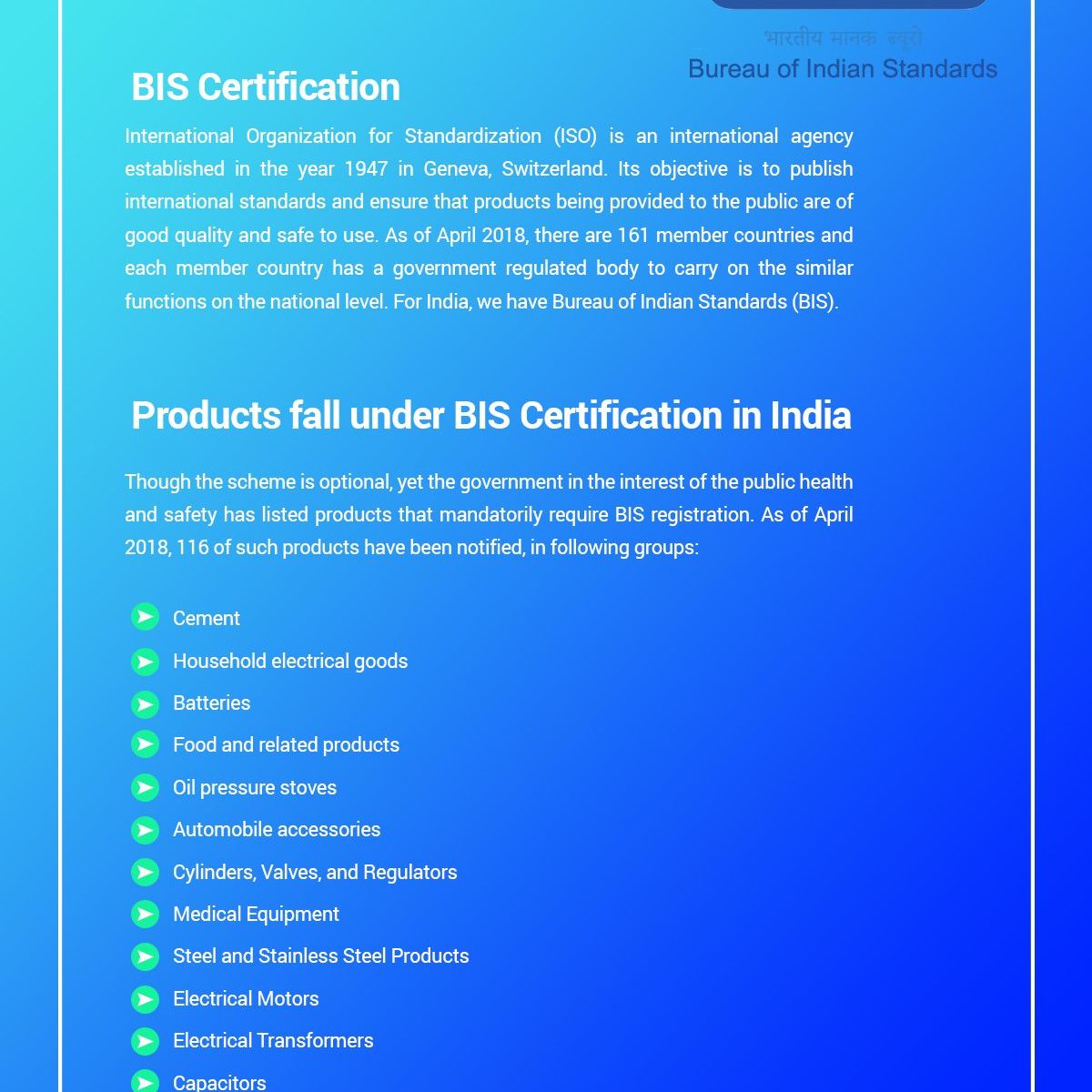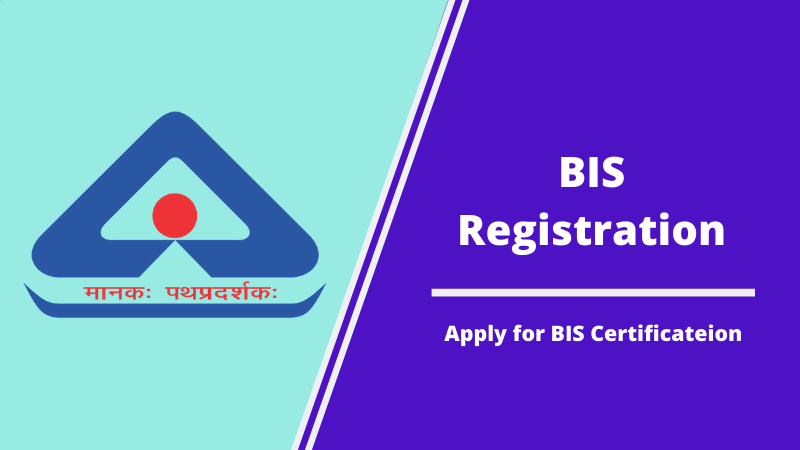Nowadays it is mandatory for almost every product to have the mark of genuineness and its authenticity in order to get the attention of its target customers. Similarly, BIS registration in India is a way to ensure customers regarding the quality, standard and purity of a product.
In this blog we will discuss about the concept, process and documents required for BIS registration-
Concept of BIS Registration
BIS registration or Bureau of Indian standards denotes the National standard body of India which ensures the standard and quality of a product, scheme of certification of products, and provides testing and standardization services. This national body comprises 25 members and its office is headquartered in New Delhi.
It has five regional offices at Kolkata, Chennai, Delhi, Mumbai and Chandigarh.
Objectives of BIS registration in India
The key objectives of BIS registration are as follows-
- It aims to protect and safeguard the health of the citizens.
- It offers the quality and standard of a product.
- It protects consumers from hazardous products.
- It boosts consumer confidence.
Regulatory Framework for BIS Registration
In India BIS registration is regulated by Bureau of Indian Standards Act, 1986 and issues BIS registration certificate according to this Act only. Further it was brought into force on 20th November, 1986 and its enforcement has reduced the ambit of the Indian Standards Institution (ISI).
Items covered under BIS Registration
Items that are covered under BIS registration in India are as follows-
- Items covered under Scheme 1 or Mark scheme
Items covered under the above category are as follows-
- Cement
- Batteries
- Household electrical goods
- Oil pressure stoves
- Food and related products
- Automobile accessories.
- Medical equipment
- Cylinders, valves and Regulators
- Electrical Motors
- Steel and Stainless steel products
- Electrical Transformers
- Chemicals and Fertilizers
- Capacitors
- Items termed as IT and Electronic Products
Items covered under the above title are as follows-
- Electronic Games such as Video Games.
- Microwave, Oven and OTGs.
- Laptop, Notebooks, Tablets
- LCD, Plasma TV, LED Televisions with screen size 32 and above
- Visual Display Units
- Optical Disc Players comprising built amplifiers of input power 200w and above.
- Wireless Keyboards
- Printers, Plotters
- Scanners
- Amplifier with an input power 200W and above
- Telephone answering machine
- Who are eligible to obtain BIS Registration
All the manufacturers or producers notified under compulsory registration scheme need to apply for BIS Registration. However, following are the things which needs to be taken care of-
- A Separate registration number is required for the products r tems manufactured or produced at different locations.
- A separate registration number is required for each brand, product or item manufactured or produced at the same place.
Documents Required for BIS Registration in India
Following are the documents required for BIS Registration in India-
- PCB Layout
- Schematic diagram
- User manual
- Critical components list
- A copy of Trademark registration
- Factory’s organizational chart
- Legal address proof for the factory
- List of machinery installed
- List of equipment used
- All the documents concerning authorized Indian Representative (AIR) when the producer resides is some other country.
- Test report of the product analysis or examined by the BIS certified lab.
- Declaration from the CEO of the firm.
- Invoice concerning sales
- Packaging list
- Bills of lading
- Insurance cover note
- Certificate declaring the Brand name of the owner
- Letter of consent (LOC) from the owner of the products
- Location map
- Flow chart showcasing the process of manufacture
Procedure for obtaining BIS Registration in India
Following are the steps involved for obtaining BIS Registration in India-
- Firstly product samples or batches are to be sent for testing in the BIS recognized laboratory.
- After receiving the test report, the applicant requires to enclose some of the basic details such as-
- Name f the Applicant
- Name of the Firm
- Complete Address
- Signature of the Lab in Charge
- Now go to the BIS portal and download form VI and VII
- The applicant is required to attach or upload all the documents along with the test reports when applying for the BIS Registration.
- After filing an online form, the applicant has to submit a hard copy of the documents and test reports along with the form at the BIS regional office.
- In case of overseas Manufacturers and producers, the applicant needs to hire an AIR, who will be responsible for obtaining certificates on behalf of its producers.
- After receiving an application, the comet authities will conduct an examination and scrutiny of all the documents, test reports and application submitted.
- If the examiner will be satisfied by the forms and document then only he will issue a BIS registration certificate.
Validity of BIS registration in India
BIS registration in India is valid for a period of two years starting from the date of issuance and after two years applicant is required to renew its registration by filing Form XII.
Conclusion
The Bureau of Indian Standards provides guidelines of quality and standards of a product to every manufacturer or producer. Moreover, BIS acts as an authority to issue BIS registration certificates. However there are chances for new entities to face difficulty in obtaining the BIS registration certificate.
At BIAT consultants, our experts will provide you end to end assistance with the matter concerning BIS Registration in India.



